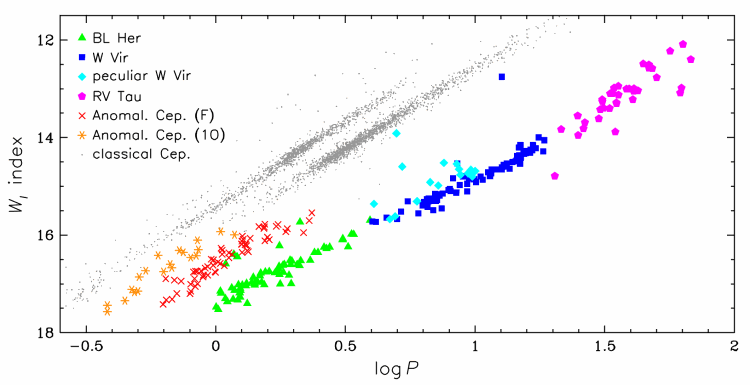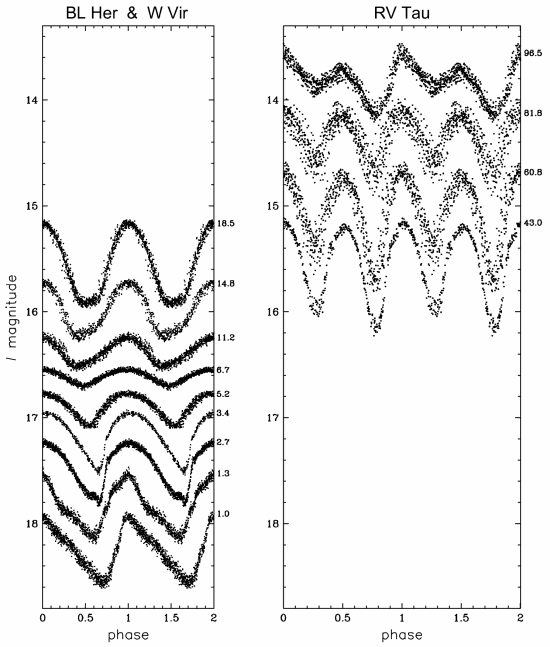The OGLE-III Catalog of Variable Stars
II. Type II Cepheids and Anomalous Cepheids in the Large Magellanic Cloud
In the second part of the OGLE-III Catalog of Variable Stars (OIII-CVS) we present 197 type II Cepheids and 83 anomalous Cepheids in the Large Magellanic Cloud (LMC). The sample of type II Cepheids consists of 64 BL Her stars, 96 W Vir stars and 37 RV Tau stars. Anomalous Cepheids are divided into 62 fundamental-mode and 21 first-overtone pulsators. These are the largest samples of such types of variable stars detected anywhere outside the Galaxy.

We present the period-luminosity and color-magnitude diagrams of stars in the sample. If the boundary period between BL Her and W Vir stars is adopted at 4 days, both groups differ significantly in (V-I) colors. We identify a group of 16 peculiar W Vir stars with different appearance of the light curves, brighter and bluer than ordinary stars of that type. Four of these peculiar W Vir stars show additional eclipsing modulation superimposed on the pulsation light curves. Four other stars of that type show long-period secondary variations which may be ellipsoidal modulations. It suggests that peculiar W Vir stars may be related to binarity. In total, we identified seven type II Cepheids simultaneously exhibiting eclipsing variations which is a very large fraction compared to classical Cepheids in the LMC. We discuss diagrams showing Fourier parameters of the light curves decomposition against periods. Three sharp features interpretted as an effect of resonances between radial modes are detectable in these diagrams for type II Cepheids.

The OGLE-III Catalog of type II Cepheids in the LMC is available from this address. The data for anomalous Cepheids in the LMC are available from this address. See README files there for details.

PLEASE cite the following paper when using the data or referring to these OGLE results:
Soszyński et al., 2008,
Acta Astron., 58, 293
(astro-ph/0811.3636)
Any comments about the data and the form of their presentation are welcome as they can improve the future releases of catalogs of variable stars detected by the OGLE collaboration. Send your messages to this address.
 back
back